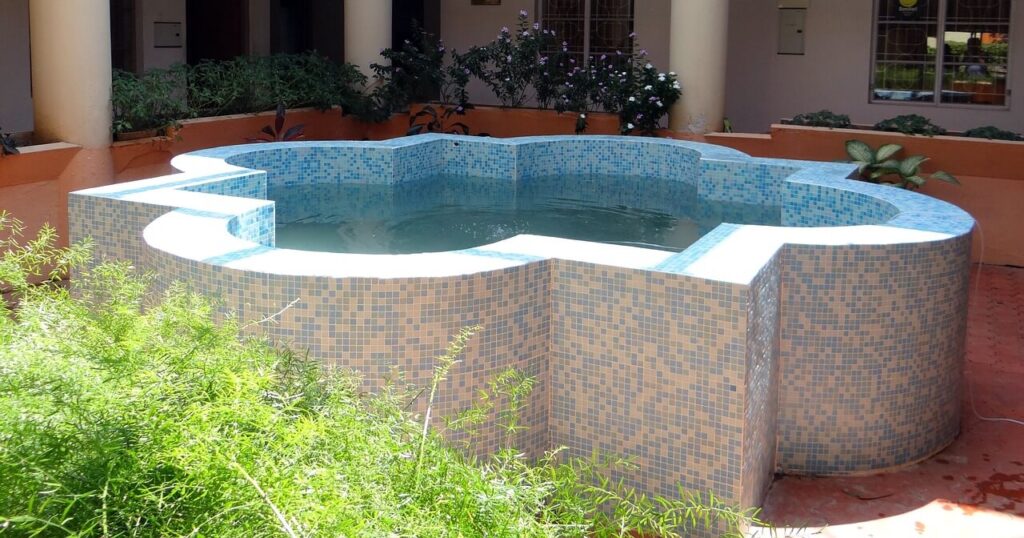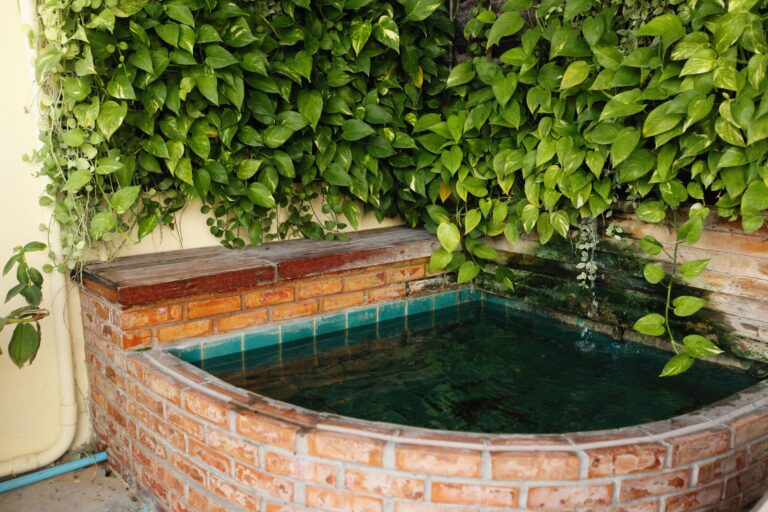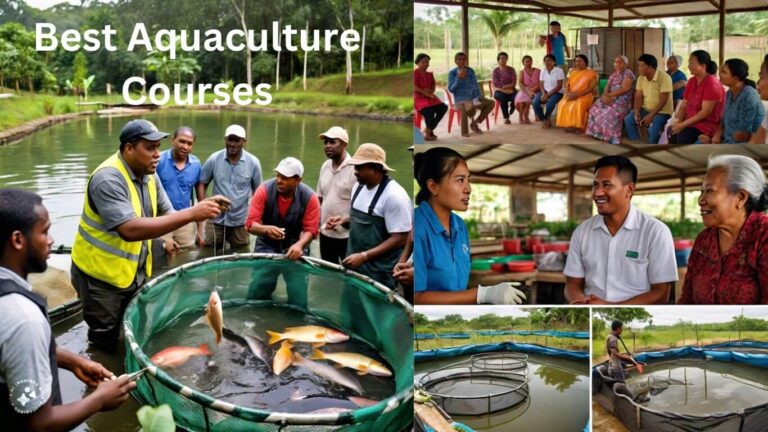Concrete fish pond is one of the popular options in fish farming. These ponds are a staple in many fish farming setups due to their durability and functionality.
However, like any system, they come with their own set of pros and cons. Let’s go into the details of concrete fish ponds, exploring everything from their construction to their maintenance, and help you decide if this is the right choice for your fish farming venture.
What is a Concrete Fish Pond?
A concrete fish pond is a type of fish farming structure built using concrete materials. These ponds can be designed in various shapes and sizes to suit different farming needs.
They are typically used in both small-scale backyard fish farms and large-scale commercial operations due to their robustness and versatility.
Advantages of Concrete Fish Ponds
1. Durability and Longevity
One of the standout features of concrete fish ponds is their durability. When you construct it properly, these ponds can last for decades with minimal maintenance. Just yesterday I visited a fish pond where the farmer showed me a pond which is 12 years old and they never had any issues with it. It never even leaked and still looks like it is less than a year old.
This longevity makes them a cost-effective choice in the long run, as you won’t need to replace or repair them frequently.
2. Customizability
Concrete ponds offer a high degree of customizability. You can design them in any shape or size to fit your space and farming requirements.
Whether you need a deep pond for specific fish species or a shallow one for breeding, concrete allows for such flexibility.
3. Better Control Over Water Quality
Concrete ponds give you better control over water quality compared to earthen ponds. The non-porous nature of concrete prevents the seepage of contaminants from the soil, ensuring a more stable environment for your fish. This can lead to healthier fish and higher yields.
4. Ease of Cleaning and Maintenance
Concrete ponds are relatively easy to clean and maintain. The smooth surfaces prevent the buildup of algae and other unwanted substances. Regular cleaning with a brush and hose is usually sufficient to keep the pond in good condition.
5. Protection from Predators
A concrete structure provides better protection against predators such as birds, cats, and other animals. You can incorporate features like overhangs or netting to further secure the pond, giving you peace of mind.
Read more on predation and how to protect your fish from predators.
6. Weather Resistance
Concrete fish ponds are able to resist and reduce the impact of weather especially during high temperatures. It’s able to keep the water cool when the weather is hot as compared to the Tarpaulin Fish Pond which always gets heated when there is excessive heat. This causes stress and subsequently leads to the death of your fish when the temperature of the water goes high.

Disadvantages of Concrete Fish Ponds
1. High Initial Cost
The initial construction cost of concrete fish ponds can be quite high. The materials and labor required to build a durable pond are significant investments.
The materials include cement, bricks/blocks, sand, iron rods, and others.
This can be a barrier for small-scale farmers or those just starting out.
2. Time-Consuming Construction
Building a concrete pond is a time-consuming process. From site preparation to curing the concrete, it can take several weeks or even months to complete the project. This requires careful planning and scheduling to avoid disruptions in your farming activities.
And even after construction – unless you are going to line it – you may have to leave it for a while for the cement and other chemicals in it to evaporate before stocking the fish in it.
3. Potential for Cracks and Leaks
Despite their durability, concrete ponds are not immune to cracks and leaks. Changes in temperature, ground movement, or improper construction can lead to structural issues over time.
Such cracks can scratch the bodies of the fish therefore causing injuries and fish mortality.
Regular inspections and maintenance are necessary to address any problems promptly.
4. Limited Mobility
Once built, concrete ponds are permanent structures. If you decide to change the layout of your farm or move to a new location, relocating a concrete pond is not an option. This lack of mobility can be a disadvantage if you anticipate changes in your farming operations.
5. Temperature Fluctuations
Concrete ponds can be susceptible to temperature fluctuations, which can affect the water temperature. In hot climates, the concrete can absorb heat and raise the water temperature, potentially stressing the fish. Similarly, in cold climates, the water can become too cold.
Don’t be confused with this point because I mentioned above that it resists weather. This is relatively resistant to weather as compared to the tarpaulin pond. The tarpaulin fish pond absorbs heat more and faster than the concrete one.
Installing shading or heating systems can mitigate this issue but adds to the overall cost.
Construction Considerations of Concrete Fish Pond
1. Site Selection
Choosing the right site for your concrete fish pond is crucial. Ensure the ground is stable and well-drained to support the weight of the pond and prevent issues like sinking or cracking.
You also have to avoid a waterlogged area as best as possible.
2. Design and Planning
You need to carefully design and plan for a successful concrete fish pond. You need to consider factors such as pond depth, shape, and volume to meet the specific needs of your fish species.
Incorporate features like drainage systems and aeration devices to maintain optimal water conditions. You should also include the Recirculating Aquaculture System (RAS) to ensure the filtration of your fishpond
3. Quality Materials
Using high-quality materials is vital for the longevity of your concrete pond. Invest in good-quality concrete mix and reinforcing materials to ensure the structure can withstand environmental stresses.
4. Professional Construction
Hiring experienced professionals for the construction can save you time and money in the long run. Proper construction techniques, such as correct reinforcement placement and adequate curing time, are crucial for a durable pond. You can also consider consulting aquaculture experts to learn more.
Maintenance Tips
1. Regular Inspections
You must conduct regular inspections to identify and address cracks, leaks, or other structural issues. Early detection can prevent minor problems from becoming major repairs.
2. Cleaning and Algae Control
Regular cleaning helps maintain water quality and prevent algae buildup. Use a brush and hose to clean the pond walls and remove debris. Consider using algae control measures like UV sterilizers or algaecides if necessary. This will also help the concrete fish pond to last longer.
3. Water Quality Monitoring
Monitor key water parameters such as pH level, dissolved oxygen, ammonia, and nitrate levels. Maintaining optimal water quality is essential for the health and growth of your fish.
Poor water quality can cause high mortality in your fish farm.
4. Repair and Maintenance
Promptly repair any cracks or leaks to prevent further damage. Use appropriate sealants or patching materials designed for underwater use. Regular maintenance of filtration and aeration systems is also crucial for the pond’s overall health.
Conclusion
Concrete fish pond offers numerous advantages, including durability, customizability, and better water quality control. However, they also come with challenges such as high initial costs and potential structural issues.
By carefully considering these factors and implementing proper construction and maintenance practices, you can create a thriving and sustainable concrete fish pond for your fish farming needs.
So, whether you’re a seasoned fish farmer or just starting out a concrete fish pond might be the solid foundation you need for a successful aquaculture venture. You may also check out the tarpaulin fish pond as an alternative to concrete fish farming.





